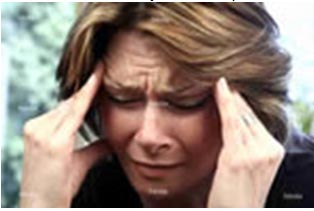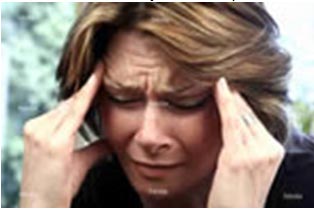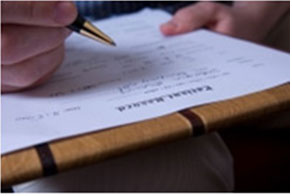Treatment of hot flushes by Chinese acupuncture and detoxification programme

Hot flushes are the most common signs and symptoms of menopause. It is know that about 75% of menopausal women suffered from hot flushes. The typical attack of hot flush is characterized by a sudden feeling of heat or warmth in the upper part of the body and usually starts on the face, neck or chest before spreading to other part of the body Hot flushes may often accompanied by excessive sweating during the night or even in the day. In majority of cases, hot flushes may be associated with nausea, dizziness or a general feeling of being unwell. Most causes of hot flushes are not known, but they may be resulted from disturbance in the thermo-regulatory centre. Hot flushes are mostly related to the decrease in hypothalamic opioid activity with low oestrogen concentrations. For many years the hormone replacement
therapy (HRT) has been used to treat hot flushes, but little attention has been paid to the side effects of this treatment in menopause patients. Recent studies have suggested that oestrogen is the treatment of choice in hot flushes as compared to that of non-hormonal drugs such as Clonidine, sedatives, tranquillisers, beta-blockers, veralipride, vitamin E and evening primrose oil.
However, Traditional Chinese Acupuncture, is one of the most holistic medical systems available today which offers patients a great alternative help, taking into account the whole pattern of each patient’s physical and mental-emotional symptoms.
| Sedation: | The sedative effects of acupuncture may treat the associated symptoms in hot flushes such as insomnia and anxiety. | |
| Homeostasis: | This is a regulatory effect of acupuncture to maintain the state of balance in the body internal environment such as sympathetic and parasympathetic autonomic nervous system activity as well as the endocrine system. | |
| Psychological effect: | Acupuncture works to calming and tranquilize the patient is by releasing the good feeling hormones such as endorphin, serotonin and dopamine. This should not be confused with hypnosis or autosuggestion because the latter are very different from acupuncture in many respects. However, a good acupuncturist can implement the physiological effect with appropriate psychological reinforcement. |


In Traditional Chinese theory acupuncture needling of specific points will try to increase water and combat fire through compensating deficiency and controlling excesses in order to restore the yin/yang balance. Therefore, acupuncture treatment nourishes the yin, clears heat and quiets the spirit by treating the kidney and heart yin depletion and strengthens liver blood with extinguishing liver wind. In certain cases when the deficient liver yin reaches a certain degree of severity, the disorders Rising Liver Fire or Hyper Liver Yang Ascending occur, including the following signs and symptoms: ill-temper, restlessness, headache, vertigo and hot flushes. The patient with hot flushes should follow healthy Diet, healthy life style and detoxification:
Diet planning on the basis of food properties can, however, be useful to achieve its optimal therapeutic effect on hot flushes. The quality of diet, once it has improved the patient’s condition, should be maintained throughout life. Certain types of food and drinks, which might trigger hot flushes, are summarised in the table below:
| Refined white sugar, brown sugar and sugar substitutes. | |
| Foods containing sugar (cakes, biscuits, chocolates, and puddings) | |
| Cheese and dairy products. | |
| Red meat (pork, beef and lamb). | |
| White bread. | |
| Fatty food (pastry, fried food and pies), including oily dressing. | |
| Some type of fruit (banana, grapes, melon and water melon). | |
| Tea, coffee gluten, yeast, caffeinateed beverages. | |
| Tea, coffee gluten, yeast, caffeinateed beverages. | |
| Processed foods, peanuts and vinegar. |
Correcting dietary errors and adopting a nutritional regime, which maintain a high level of health are based on a healthy diet recommended by leading dieticians, nutritionists and other medical researchers as in the following table:
| An increase in consumption of fruits, vegetables (with exception of certain fruits and whole grains. | |
| Eating plant-based diet, which is low in saturated fat and cholesterol, more than meat-based diet. | |
| White meats such as fish and chicken should be preferred over red meat. | |
| Decreasing intake of refined foods. | |
| Decreasing intake of alcohol with a limit of 14 units per week. | |
| Diet should contain: brown rice, millet, amaranth, quinoa, buckwheat and potatoes, yeast-free bread, Organic fresh vegetables, frozen or freshly juiced, Fresh or frozen organic fruits (not canned).. |
2. Detoxification Programme (fasting):
The basic principle of detoxification is that the body needs help to cleanse itself by a process of neutralisation and excretion of potentially harmful chemicals, such as caffeine, acetaminophen, sodium benzoate, tannin and nicotine. These toxins are supposedly built up in the body because of unhealthy diet, chemical medicine and the effect of environmental pollution. Detoxification programme consists of essential elements of fasting recommended mainly in Germany and France, and based on a variety of choices.
3. Life style
1.EXERCISES:
Physical activity can increase the concentration of endogenous oestrogen which contributes in the reduction of hot flushes and can decrease the quantity of circulating follicular stimulating hormone (FSH) and Luetinizing hormone (LH) with an increase in the level of endorphin during the attack of hot flush.Therefore, all forms of regular exercises, daily or at least three or four times weekly, such as a 30-45 minutes (in 3 equal phases of 10-15 minutes) of brisk walking, might help to prevent or lessen hot flushes. However, patients who are planning an exercise programme should have a thorough check with their general medical practitioners.
2.RELAXATION
As emotional and mental stresses may trigger and increase the frequency of hot flushes, relaxation is a useful tool in increasing the emotional strength and in turn relieving and reducing the number of hot flush attacks. Therefore, patients have several choices of methods used in relaxation and these are: Acupressure, the Alexander technique, Body Massage, Reflexology, Shiatsue and Yoga.
4. Other preventive measures:
Other useful suggestions given to patients with hot flushes are summarised in following Table:
Preventive measures in hot flushes
| avoid alcohol, hot drinks and drinking six glasses of purified water a day. | |
| avoid hot showers and baths and putting a clip-on fan in the vanity area to use while applying makeup or using the hairdryer. | |
| dress in layers of breathable cotton and using all-cotton sheets to avoid chafing. | |
| wear thin cotton or silk night-wear, sleeping with a fan overhead if possible, as well as one by the bedside (clip-on fans work well) and placing a thermos of cool water by the bedside. | |
| Eliminate caffeine, especially afternoon caffeinated tea or coffee. | |
| Consider an increase of vitamin B complex, Vitamin C, calcium/magnesium and potassium intake which are depleted through excessive perspiration. | |
| Eat a healthy diet with early meal in the evening and avoid spicy foods, excess fat, refined sugar and foods high in additives and/or preservatives. | |
| Exercise (early in the day) and use a relaxation tape before bedtime. | |
| No cigarette smoking. | |
| Purify environments from the source of any toxic materials by removing: stored or leaking chemicals, dyes, paints, solvents, glues, acids, insecticides and cleaning agents. |
